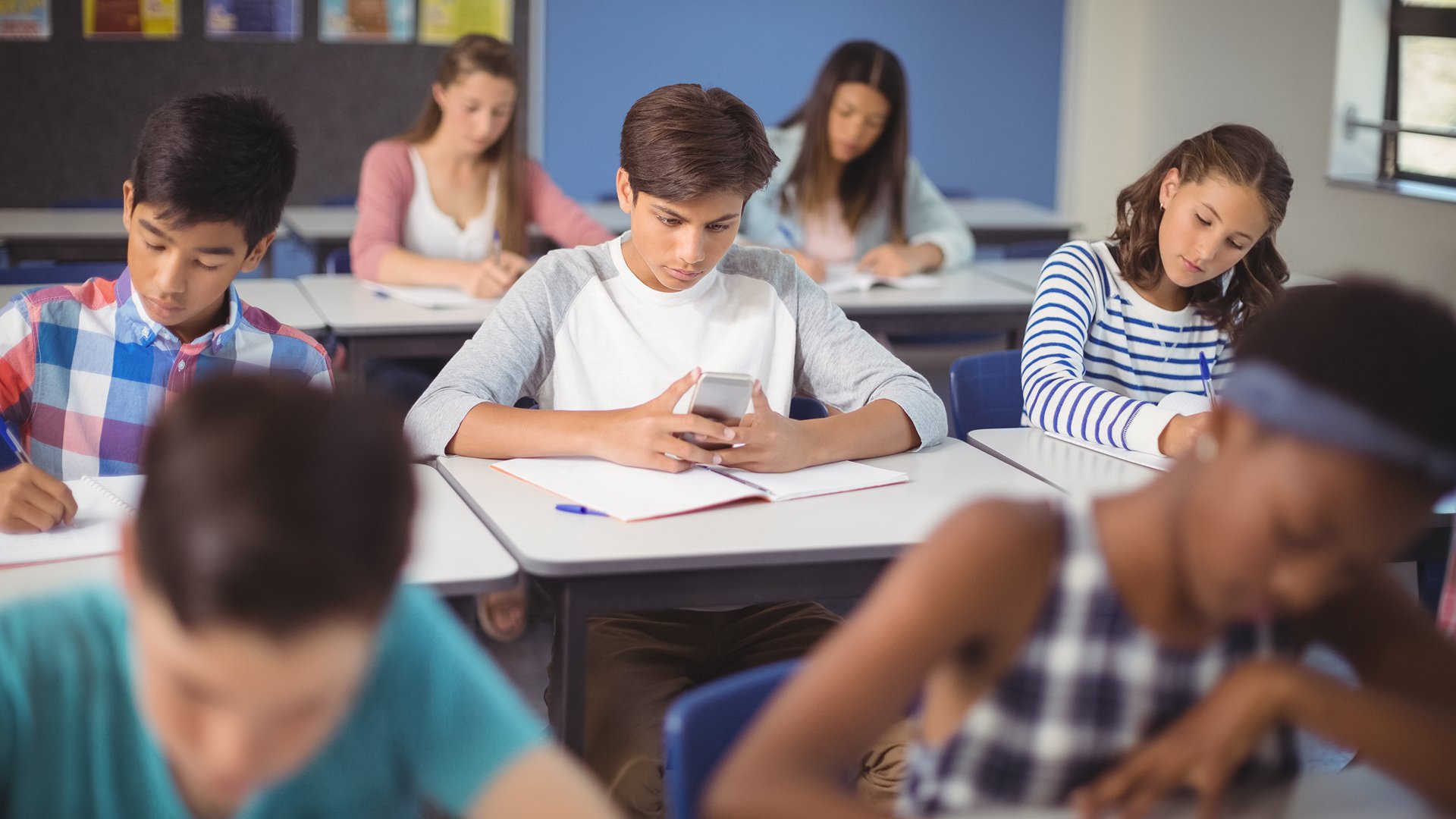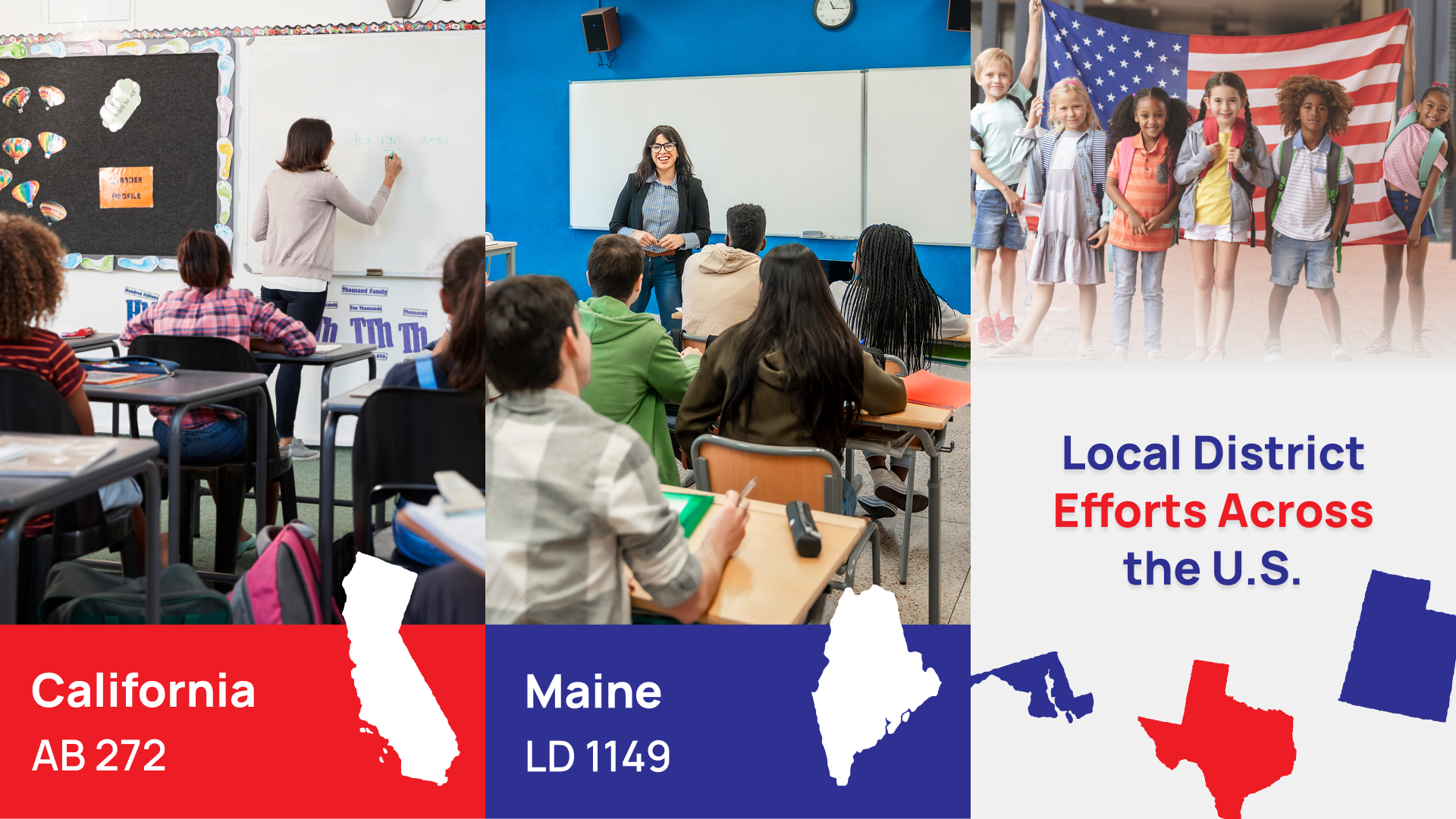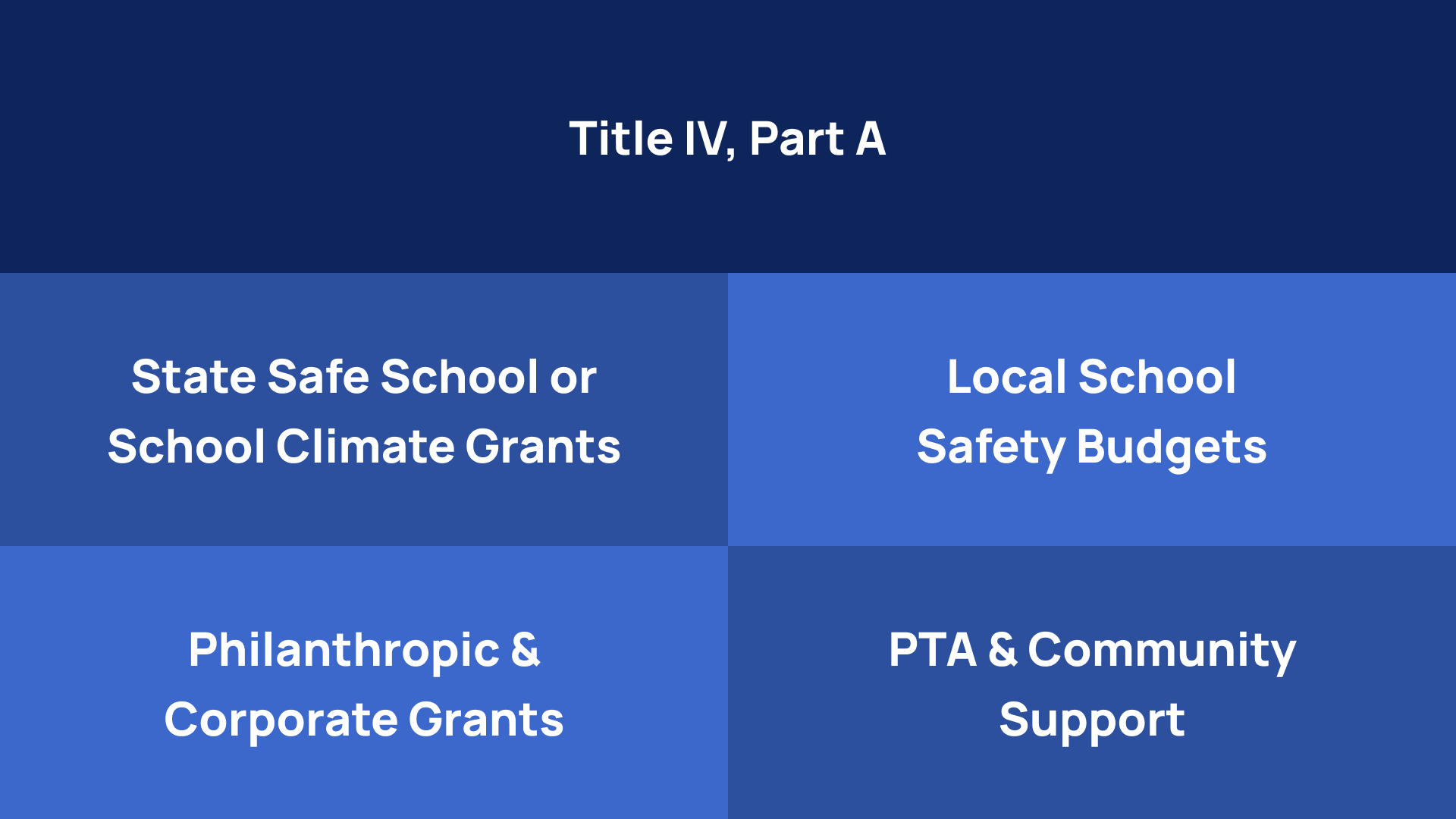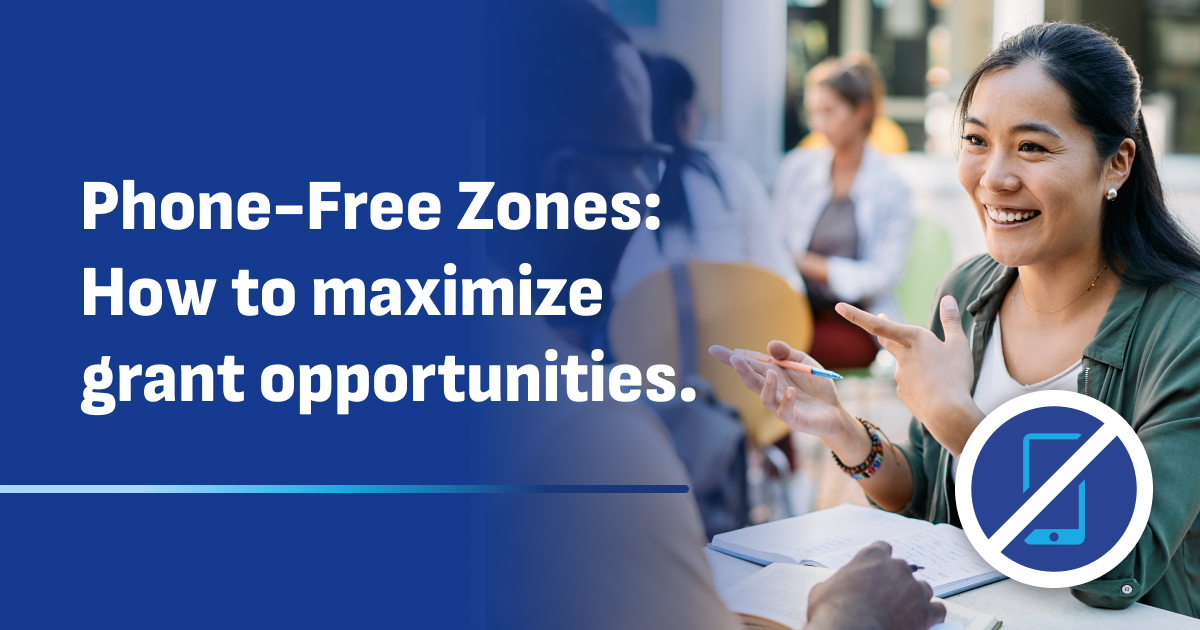Phone free zones are becoming a powerful solution for schools looking to improve focus, increase safety, and support student mental health. Across the country, educators are securing funding through federal and state grants, local initiatives, and partnerships with businesses. This movement isn’t just about taking phones away. It’s about creating classrooms where students can truly engage, think clearly, and feel more present. If your school is considering this shift, there are more practical and proven strategies available than you might think.

How Schools Can Secure Funding to Create Focused, Safer Learning Environments
The rise of smartphones in classrooms has sparked a nationwide debate – and states are starting to act. From California to Maine, momentum is building around creating structured, distraction-free school days. But the biggest hurdle for most schools isn’t policy – it’s funding.
That’s where smart grant strategy comes in.
Whether you’re considering a full campus rollout or a pilot in select classrooms, there is funding out there. And schools that make the case for phone-free environments as tools for academic and emotional well-being are often first in line to receive it.
How Some States Are Leading the Way

California’s AB 272
California passed legislation allowing schools to limit or ban phones during school hours. It doesn’t include dedicated funding – but it empowers schools to act without fear of legal backlash.
Maine’s LD 1149
While this bill didn’t mandate phone bans, it encouraged local boards to address phone use – evidence that lawmakers are recognizing the problem.
Local District Efforts Across the U.S.
Districts in Maryland, Texas, and Utah are launching their own phone-free policies – even in the absence of state mandates. Some allow phones at lunch only; others go fully offline. Many are looking for sustainable ways to enforce those policies effectively.
Finding the Funds: Where to Look

Title IV, Part A (Student Support & Academic Enrichment Grants)
Part of the Every Student Succeeds Act (ESSA), these grants are built to support student wellness, school safety, and digital citizenship. Phone lockers that help reduce tech addiction, improve focus, and support better mental health fit perfectly under this umbrella.
State Safe School or School Climate Grants
Many states offer grant programs aimed at reducing campus violence, bullying, or general disorder.
Charging lockers allow administrators to enforce phone-free policies and reduce distractions, misuse, and peer conflicts caused by devices.
Local School Safety Budgets
Some states, like Texas, provide safety allotments to districts. These can often be applied to secure storage that minimizes theft, cyberbullying, or classroom interruptions. Demonstrating how your initiative supports a safer school climate can unlock these funds.
Philanthropic & Corporate Grants
Foundations like Lowe’s Toolbox for Education, Target’s community impact programs, and regional nonprofits often fund tech-free, student-focused solutions. Pitching lockers as a wellness investment or digital balance initiative may help land funding – even for pilot programs.
PTA & Community Support
Grassroots fundraising shouldn’t be overlooked. Many schools have successfully funded HonestWaves lockers through a blend of PTA drives, alumni contributions, and local business sponsorships.
Making Your Case: Data, Not Drama

To build a winning proposal:
- Start Small. Measure Impact.
Run a pilot in a single grade level or hallway. Track reductions in screen time, disciplinary incidents, or social conflicts. This data becomes the backbone of future grant applications. - Highlight Academic & Emotional Benefits.
Phone-free environments improve concentration, foster better sleep, and reduce anxiety. Those are real, measurable benefits that tie directly into funding priorities. - Show That It’s Enforceable.
Yondr pouches can be hacked or require staff to lock/unlock them. HonestWaves lockers are self-serve, tamper-resistant, and double as charging stations – making them a smart investment in both security and infrastructure.
Why HonestWaves Lockers Align with Grant Goals
Here’s how we help schools meet the mission:
- Device Control Without Daily Labor
No need for staff to manage pouches or phone bins. - Charging and Storage in One
Students return to a charged phone, preventing “just checking” excuses. - Lasts for Years, Not Semesters
Our lockers are made from steel, not fabric. - Supports Mental Health and Academic Focus
Reduces peer pressure, social media anxiety, and class-time disruptions.
Next Steps for Schools Ready to Act
- Talk to Your District Admins
Ask about Title IV funds or safety allotments that might already be available. - Prepare a Pilot Plan
Start small, gather feedback, and use those results to justify expansion. - Reach Out to HonestWaves
We’ll help you create mockups, write proposals, and provide ROI estimates to support your grant pitch.
Phone-free zones don’t have to be pipe dreams. With the right strategy, they can be fully funded, embraced by the school community, and transformative for students. HonestWaves is ready to help make that happen.
Let’s create better learning environments – together.

